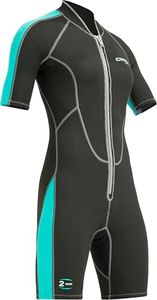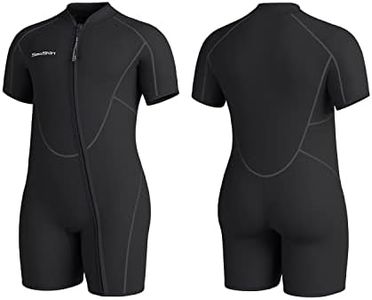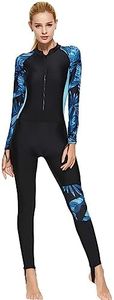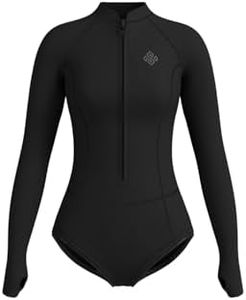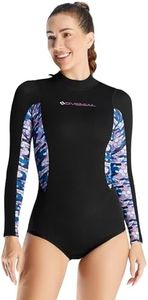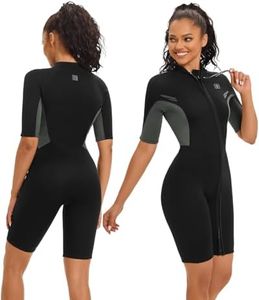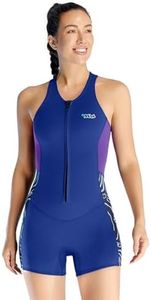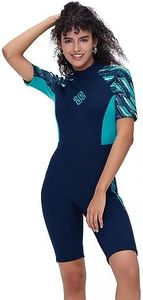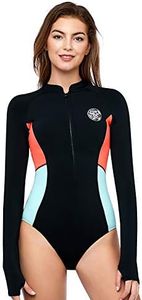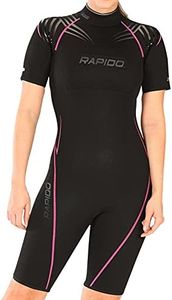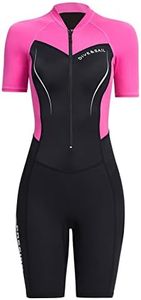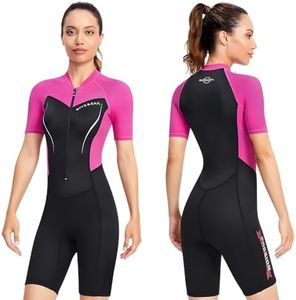We Use CookiesWe use cookies to enhance the security, performance,
functionality and for analytical and promotional activities. By continuing to browse this site you
are agreeing to our privacy policy
10 Best Womens Shorty Wetsuits
From leading brands and best sellers available on the web.Buying Guide for the Best Womens Shorty Wetsuits
When shopping for a women's shorty wetsuit, it's important to match the suit to your activities and environment. Shorty wetsuits are ideal for warmer water and provide extra flexibility and comfort compared to full suits. Focusing on key specs will help you find a wetsuit that offers both performance and comfort for your needs.ThicknessWetsuit thickness refers to the depth of the neoprene material, usually measured in millimeters and often shown as two numbers, such as 2/2mm or 2/1mm (torso/arms and legs). This determines how warm the suit will keep you. Thinner suits (1-2mm) are more flexible and better for very warm water, while thicker shorties (up to 3mm) offer more warmth and are good for slightly cooler conditions. When picking thickness, consider the typical water temperature where you'll swim—if you feel cold easily, opt for the thicker end, but remember thinner suits are easier to move in.
MaterialMost shorty wetsuits are made from neoprene, but there are differences in the quality. Higher-quality neoprene feels stretchier, lighter, and provides better insulation. Some suits use eco-friendly or quick-drying materials as well. Softer and stretchier neoprene is easier to put on and move in, making your activity more comfortable. If you value flexibility and comfort, look for wetsuits described as having 'super stretch' or 'premium neoprene.'
Fit and SizingA proper fit is crucial for wetsuit performance, as too loose a suit will let in water and reduce insulation, while too tight will be uncomfortable. Shorty wetsuits come in a spectrum of sizes and some even offer different fits (standard, tall, or petite). Make sure to consult the sizing chart from the brand and, if possible, try on or check the return policy before buying. If you plan to be active (surfing, paddleboarding), a snugger fit is good, but you should still be able to move comfortably without restriction.
Seam ConstructionThe way wetsuit seams are built can affect both warmth and flexibility. Flatlock stitching is common for shorties and is great for warm water as it's breathable but may let in some water. Glued and blind-stitched seams are more watertight, keeping you warmer in slightly cooler conditions, but might be less flexible. Choose based on your primary water temperature—flatlock for the warmest and glued/blind-stitched if you need extra warmth.
Entry System (Zipper Type)How you get in and out of the wetsuit matters for ease of use and water resistance. Back zips are the most common and easiest to get into, making them great for beginners. Chest zips can provide a more watertight seal and better flexibility, but can be trickier to put on. Some shorties are even zipperless for maximum stretch. If you want convenience and are new to wetsuits, a back zip works best; if you want less water flushing in and don’t mind a little more effort, chest zips are great.
Coverage LengthShorty wetsuits typically have short sleeves and short legs, but the exact length can vary. Some have longer legs or sleeves for added warmth or sun protection. If you want to stay as cool as possible or want maximum flexibility, choose the shortest options. If you’re looking for a bit more coverage from cool wind or sun, go for slightly longer sleeves or legs.
